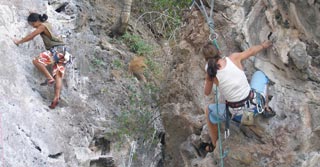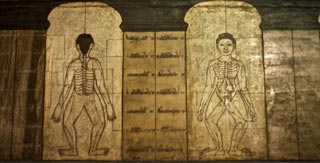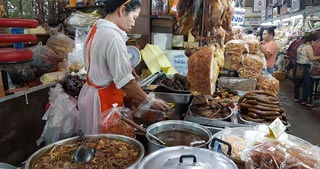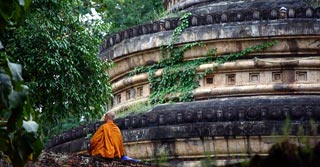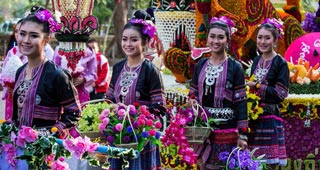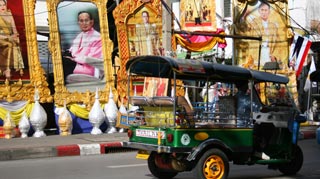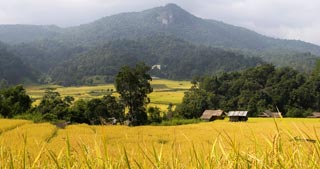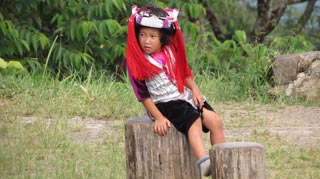Wat Phra That Doi Suthep
"You haven't been to Chiang Mai until you visit Wat Doi Suthep", or so the saying goes. So if you are thinking of giving this "temple of temples" a miss, you might want to think again. Without a doubt, the most famous temple in Northern Thailand, Wat Phra That Doi Supthep would arguably give some of the famous temples in Bangkok a run for their money as the most well-known temple in Thailand. Located just below the summit of Doi Suthep Mountain, at 1,676 metres (5,469 ft) and some 19km from Chiang Mai city, this stunning temple which was built in 1383, can be seen from the city on a clear day and even at night when it is lit up. The origins of the temple are shrouded in an ancient legend about a sacred white elephant that was carrying a fragment of the holy Buddha's shoulder bone. The jumbo was let loose on the mountain to wander close to the summit, where it trumpeted, circled three times and promptly dropped dead. This was taken to indicate an auspicious site for the temple, although the more cynical amongst us might take it to mean the poor elephant died of exhaustion. Either way, this gorgeous, fascinating temple was built on the site. Wat Doi Suthep's "signature postcard" contain views of the famous rising staircase, which is flanked by the ornate mosaic naga (serpents), with the main temple beckoning invitingly from above. When you leave the car park near the base of the staircase, you have the choice of either walking up the 309 steps or taking a tram to the top (which costs 20B). Unless you are physically challenged, you will find the climb easier than you think - as long as you remember to take it easy. When you reach the terrace at the top, have a well-deserved rest and enjoy the cold drinks and snacks that are available as well as ice cream. Don't forget that before you go any further, temple dress code applies. The wide terrace is adorned with breadfruit trees, shrines, rock gardens and monuments, and there is a statue of the white elephant that carried the Buddha relic to its final resting place. There is also lizard-like guardian dragon statue known as "Mom". Next, climb the steps leading to the inner terrace, and take the walkway around the temple's most holy area - the much-revered golden Chedi. The huge building rises up in the sunshine with a glorious five-tiered golden roof which marks the city's independence from Burma and its union with Thailand. Inside the Chedi, the shrine contains the Buddha's relic, and within the central area, you will find pagodas, statues in a superb variety of poses and materials, bells, a museum, many smaller shrines, a model of the Emerald Buddha and also a statue of Ganesh - a Hindu God. All of these demonstrate the influences of both Hinduism and Buddhism during this "crossover" period in Thai history. Within the compound, you may also like to visit the Doi Suthep Vipassana Meditation Centre which undertakes a variety of religious and meditation programmes for visitors. Finally, no visit is complete without walking across the terrace to the far side of the temple to take in the breath-taking views of Chiang Mai City, 19km away to the south-east and the surrounding countryside. Entry: 30B Open: 6:00am - 5:00pm. Tel: +66 53295002 Getting Here: . Songtaews leave the city from Pratu Chang Phuak and it will cost you 50B up and 50B down, but the drivers will wait until they have sufficient (up to 8) passengers before they depart. An alternative is to take a songthaew from your guesthouse to Chiang Mai zoo for about 20B. Here, you will find more songtaews lined up in Huai Kaeo Rd, waiting to fill their vehicles for a trip up the mountain. This will cost around 40B for a one-way trip. The journey can also be made by bicycle (with proper gears) and by motorbike. For the former, you will need to be pretty fit and for the latter, you should be an experienced driver as the road is extremely steep. Also be wary if you are prone to travel sickness as the journey by songthaew is very steep and winding.
Chiang Mai
Chiang Mai











